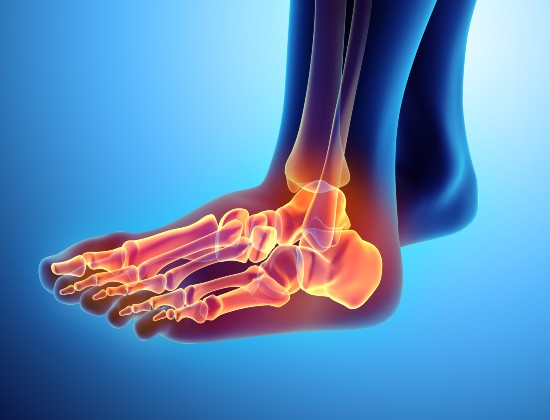Freiberg's disease
Freiberg’s disease (named after the doctor who first described it in 1914) is a condition, more common in women, that usually affects the 2nd metatarsal bone in the foot which becomes misshapen. As the end of the bone loses its shape, it has been described as looking as if it’s ‘a square peg trying to fit into a round socket’.
What causes it?
It is believed that Freiberg’s disease is caused by a loss of blood supply to the end of the bone, which can occur around puberty. It may be caused by repetitive strain on the bone, resulting in subtle damage to the end of the bone near the growth area. This stops it being able to develop a normal shape.
What are the symptoms?
Symptoms include pain, stiffness and swelling around the affected toe, usually in the teens or early adulthood. It’s usually worse if high heels are worn, with pain under the ball of the foot.
Often there is chronic (long term) discomfort in the foot. As the symptoms progress, the swelling and stiffness can become more noticeable and you may find that you develop a limp as you try to keep weight off the foot.
How is it diagnosed?
In most cases, the diagnosis is made following a medical examination of the toe and discussing your symptoms with the specialist, backed up by X-rays.
How is it treated?
Non-operative treatment: this cannot cure the condition, but can help to improve the symptoms by using insoles or custom-made shoes to reduce pressure on the painful toe when you are active. Your doctor may also suggest that you take painkillers or anti-inflammatory medication.
Operative treatment: this involves tidying up the joint (also known as debridement) to reduce inflammation and help relieve the symptoms. Another surgical option is to change the position of the deformed part of the metatarsal bone by realigning (straightening) it to try to make the joint work more smoothly.
Important: This information is only a guideline to help you understand your treatment and what to expect. Everyone is different and your rehabilitation may be quicker or slower than other people’s. Please contact us for advice if you’re worried about any aspect of your health or recovery.


